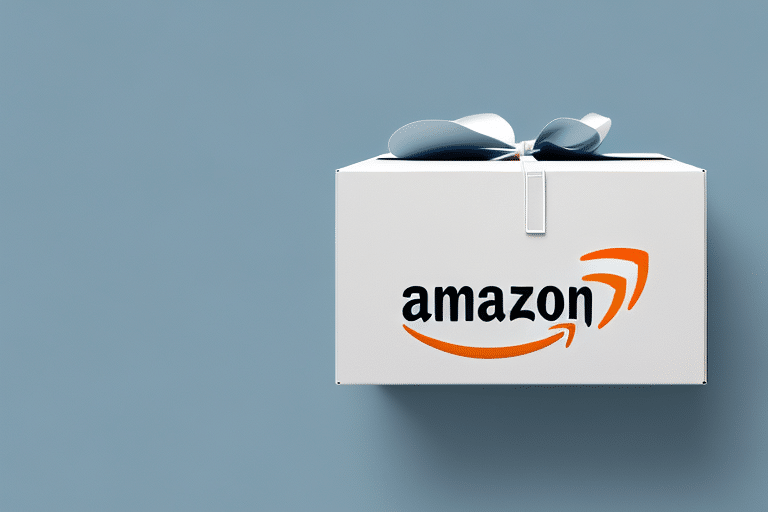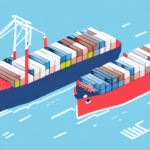How Much Does Amazon FBA Cost? A Comprehensive Guide
Selling on Amazon through Fulfillment by Amazon (FBA) can be an excellent way to grow your business on the world's largest online marketplace. However, before you sign up for FBA, it is essential to understand the costs you will incur. In this comprehensive guide, we will break down the costs of Amazon FBA, including fulfillment, storage, and additional fees, and explain how to compare FBA costs with self-fulfillment options to make the most informed decision for your business.
Understanding Amazon FBA
What is Amazon FBA?
Amazon FBA is a program offered by Amazon that enables sellers to outsource the fulfillment, storage, and shipping of their products to Amazon. Essentially, sellers send their products to Amazon's fulfillment centers, where the company handles the rest, from packing to shipping to customer service. Once a customer places an order, Amazon locates and ships the product from its warehouse, and the seller receives payment in return.
One of the benefits of using Amazon FBA is that it allows sellers to take advantage of Amazon's vast customer base and reputation. By using Amazon's platform, sellers can reach millions of customers worldwide, which can help increase sales and grow their business.
In addition, Amazon FBA offers various tools and resources to help sellers manage their inventory, track their sales, and optimize their listings. For example, sellers can use Amazon's inventory management system to keep track of their stock levels and ensure that they never run out of products. They can also use Amazon's analytics tools to monitor their sales performance and identify areas for improvement.
Advantages of Using Amazon FBA
Using Amazon FBA can give sellers a competitive edge over other sellers who opt for self-fulfillment. Amazon's vast network of fulfillment centers offers benefits such as:
- Fast and reliable shipping: Amazon Prime members expect quick delivery times, and FBA helps meet those expectations.
- Access to Prime customers: FBA products are eligible for Amazon Prime, increasing visibility and sales potential.
- Excellent customer service: Amazon handles customer inquiries, returns, and refunds, reducing the burden on sellers.
- Scalability: Easily expand your product offerings without worrying about storage space or shipping logistics.
- Improved search rankings: Amazon prioritizes FBA products in search results, enhancing product visibility.
These advantages can lead to increased sales and revenue, making FBA a valuable option for many sellers.
Breakdown of Amazon FBA Costs
Fulfillment Fees
FBA fulfillment fees include pick and pack fees, shipping fees, and packing materials fees:
- Pick and Pack Fees: Charged per item based on the product's size and weight.
- Shipping Fees: Calculated based on the product's size and weight, as well as the distance between the fulfillment center and the customer's location.
- Packing Materials Fees: Charged for the materials used to pack and ship items, such as boxes and tape.
Additionally, Amazon offers optional services for an extra cost, including labeling, removal, and disposal of items. These services can help sellers save time and resources on these tasks.
Storage Fees
Amazon charges storage fees for products that remain in its fulfillment centers. These fees vary based on the time of year and the product's size and volume:
- Standard Storage Fees: Applied monthly based on the cubic feet occupied by the inventory.
- Long-Term Storage Fees: Charged for products stored for more than 365 days, with fees assessed twice a year in February and August.
To avoid unnecessary storage fees, it's crucial to monitor inventory levels and remove slow-moving products promptly.
Additional Fees
Other fees associated with Amazon FBA include:
- Removal Fees: Charged when sellers choose to remove or dispose of their inventory.
- Disposal Fees: Applied for disposing of unsellable inventory.
- Return Processing Fees: Charged for processing returned products.
Understanding all potential fees is essential to accurately calculate the total cost of using Amazon FBA.
Calculating the Total Cost of Amazon FBA
When calculating the total cost of using Amazon FBA, consider the following factors:
- Fulfillment Fees: Based on the size and weight of your products.
- Storage Fees: Monthly and long-term storage costs.
- Additional Fees: Removal, disposal, and return processing fees.
- Shipping to Fulfillment Centers: Costs vary depending on distance and shipping method.
Using Amazon's FBA Revenue Calculator can help sellers estimate their costs accurately by inputting specific product details.
It's also important to factor in long-term storage fees to maintain profitability. Regularly reviewing and managing inventory levels can help minimize these costs.
Amazon FBA vs. Self-Fulfillment: Cost Comparison
Choosing between Amazon FBA and self-fulfillment depends on various factors, including product category, sales volume, and business priorities.
Advantages of Amazon FBA
- Cost Savings on Storage and Shipping: Amazon offers competitive rates, especially for high-volume sellers.
- Time Efficiency: Outsourcing fulfillment allows sellers to focus on other aspects of their business.
- Enhanced Customer Experience: Fast shipping and reliable service can lead to higher customer satisfaction.
Advantages of Self-Fulfillment
- Control Over Fulfillment Process: Greater control can be crucial for quality control and handling special products.
- Cost-Effectiveness for Low Volume: FBA fees may not be justified for sellers with lower sales volumes.
- Flexibility in Packaging and Branding: Ability to customize packaging can enhance brand identity.
Ultimately, sellers should perform a detailed cost-benefit analysis to determine which fulfillment method aligns best with their business goals.
Strategies to Reduce Amazon FBA Costs
FBA sellers can implement several strategies to minimize their costs:
- Optimize Inventory Management: Use data-driven approaches to forecast demand and avoid overstocking.
- Minimize Returns: Ensure product quality and accurate listings to reduce return rates.
- Utilize Amazon's Programs: Programs like Multi-Channel Fulfillment (MCF) and FBA Small and Light can offer cost savings for specific product categories.
- Negotiate Bulk Shipping Rates: Shipping larger quantities at once can reduce per-unit shipping costs.
- Regularly Review Fees: Stay informed about Amazon's fee structure and adjust strategies accordingly.
Estimating Profit Margins with Amazon FBA
To estimate your profit margin with Amazon FBA:
- Calculate Total Costs: Sum up all fulfillment fees, storage fees, additional fees, and shipping costs to Amazon's fulfillment centers.
- Determine Selling Price: Set a competitive price for your product based on market research.
- Subtract Costs from Revenue: Profit Margin = Selling Price - Total Costs.
Maintaining a healthy profit margin is crucial for sustained business growth. Utilize tools like Amazon's FBA Revenue Calculator to perform accurate calculations and adjust your pricing strategy as needed.
Financial Benefits of Using Amazon FBA
Amazon FBA offers several financial benefits that can enhance your business operations:
- Access to Amazon's Customer Base: Leveraging Amazon's reputation can lead to increased sales and higher revenue.
- Lower Shipping Rates: Amazon's partnerships with shipping carriers can provide discounted shipping rates.
- Increased Sales Velocity: Faster shipping and Prime eligibility can enhance sales performance.
- Scalability: Easily scale your business without the need for significant investments in warehousing or logistics.
These financial advantages can contribute to improved profitability and business growth over time.
Common Mistakes to Avoid with Amazon FBA
Sellers using Amazon FBA should be aware of and avoid common pitfalls to maximize their success:
- Poor Inventory Management: Failing to monitor inventory levels can lead to stockouts or excess storage fees.
- Ignoring Seasonality: Not accounting for seasonal demand fluctuations can result in overstocking or missed sales opportunities.
- Underestimating Fees: Failing to account for all FBA fees can erode profit margins.
- Poor Listing Optimization: Inadequate product listings can negatively impact visibility and sales.
- Neglecting Customer Service: Even though Amazon handles customer service, maintaining good communication can enhance seller reputation.
By proactively addressing these areas, sellers can enhance their FBA experience and drive better business outcomes.
Conclusion
When considering using Amazon FBA, understanding the costs involved is crucial to making an informed decision. By breaking down the fulfillment, storage, and additional fees, this comprehensive guide should help you determine whether FBA or self-fulfillment makes the most sense for your business. Whatever your decision, taking the time to estimate your costs and calculate your profit margins will enable you to grow your business and achieve sustainable success on Amazon.




















